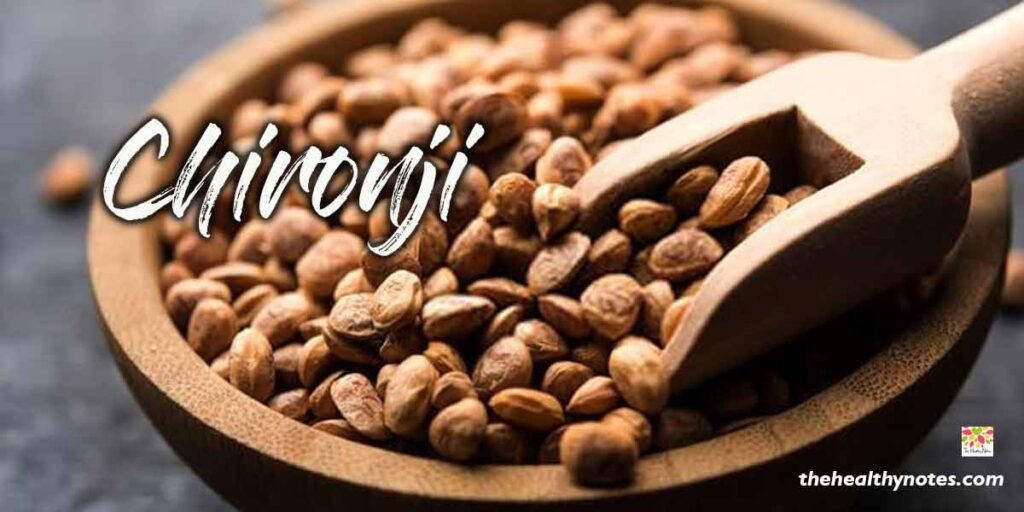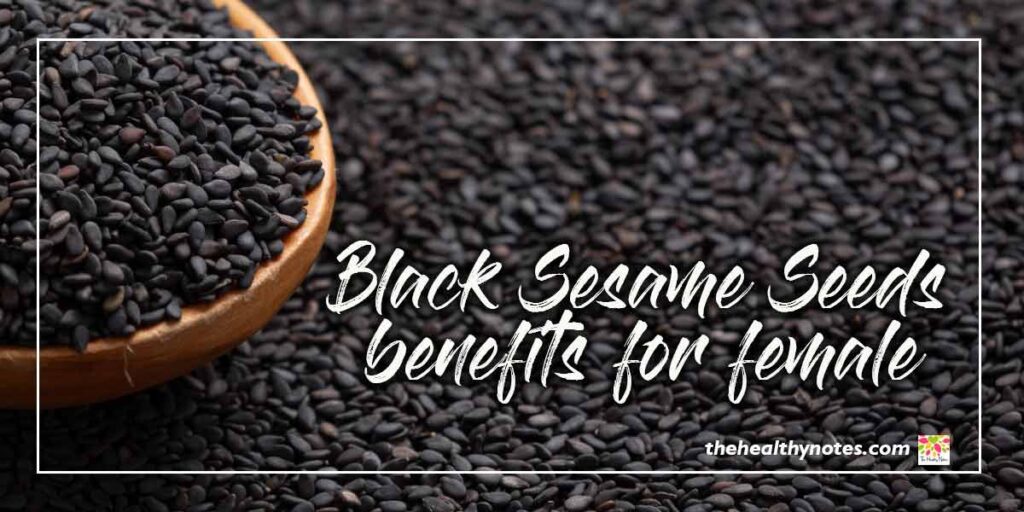
What is Chironji ?
Also known as “charoli” or “chirongi,” is the seed of a tree called Buchanania lanzan. These seeds are small, almond-shaped nuts with a pale, ivory-colored shell. It is a small, almond-shaped nut that is native to India and some other parts of Southeast Asia.
These seeds are often used in Indian cooking, particularly in sweets and desserts, for their mild, nutty flavor and crunchy texture.
Chironji and Chironji Seeds
“Chironji seeds” and “Chironji” typically refer to the same thing. This is the common name for a tree nut, and the seeds extracted from these nuts are often called “chironji seeds.”
What is Chirnoji in English?
The term is already in English, but it refers to the seed of the Buchanania lanzan tree, which is commonly used in Indian cuisine and is known by this name.
However, the Chironji in English is Cuddapah almond.
Other Names of Chironji
Its seeds are known by various names in different languages across India. Here are some of the names of chironji seeds in different Indian languages:
In Hindi: Charoli or Chironji
In Marathi: Chironji or Charoli
In Gujarati: Chironji or Chironji
In Kannada: Saara paruppu
In Tamil: Saara paruppu or Sara pappu
In Telugu: Sara parupu or Sara pappu
In Malayalam: Sara parippu
In Bengali: Chironji or Charoli
In Punjabi: Chironji or Charoli
In Oriya: Charu or Charoli
In Assamese: Charu or Charoli
In Kashmiri: Chironji or Charoli
In Urdu: Charoli or Chironji
Chirongi Name in Germany:
Chironji is not native to Germany, and they are not commonly used or known by a specific name in the German language. Therefore, there is no specific German name for Chironji. If you are looking for these seeds in Germany or trying to describe them to someone in Germany, you may need to use the English name “chironji” or provide a description of the seeds.

Potential Health benefits of Chironji
These seeds offer several potential health benefits due to their nutrient content and chemical composition. Some of the notable health benefits of chironji seeds include:
- Rich in Nutrients: These seeds are a good source of various essential nutrients, including protein, healthy fats, vitamins (such as vitamin B1 and vitamin C), and minerals (such as calcium and phosphorus).
- Antioxidant Properties: These seeds contain antioxidants like flavonoids and polyphenols, which can help protect the body’s cells from oxidative stress and reduce the risk of chronic diseases.
- Heart Health: The monounsaturated and polyunsaturated fats in chironji seeds can contribute to heart health by reducing bad cholesterol levels and lowering the risk of cardiovascular diseases.
- Digestive Health: These seeds contain dietary fiber, which can aid in digestion, prevent constipation, and support a healthy gastrointestinal system.
- Anti-Inflammatory: Some compounds in these seeds have anti-inflammatory properties, potentially reducing inflammation in the body, which is linked to various chronic diseases.
- Skin Benefits: Chironji oil, derived from the seeds, is used in traditional Ayurvedic medicine and skincare products. It possesses the capability to boost skin hydration and enhance its overall texture.
- Bone Health: The seeds contain essential minerals like calcium and phosphorus, which are crucial for maintaining strong and healthy bones.
- Weight Management: These seeds can be a part of a balanced diet for weight management as they provide satiety due to their protein and healthy fat content.
- Diabetes Management: Some research suggests that these seeds may help regulate blood sugar levels, making them potentially beneficial for individuals with diabetes.
- Stress Reduction: These seeds are known for their calming effect on the nervous system, which may help reduce stress and anxiety.
It’s important to note that while the seeds offer potential health benefits, they should be consumed in moderation as part of a balanced diet. If you have specific health concerns or conditions, it’s advisable to consult with a healthcare professional before adding these seeds or any new food to your diet.
About Chironji Seeds Plant/Tree
The Chironji tree, scientifically known as Buchanania lanzan, is native to India and Southeast Asia. It’s a medium-sized deciduous tree with fragrant pale yellow flowers in spring. Its small, woody fruits contain prized these seeds, used in Indian cuisine and Ayurvedic medicine. The tree adapts to various climates and soil types, holds cultural significance, and efforts are made to conserve it due to habitat loss. These seeds add texture and flavor to dishes and have potential health benefits, making the tree a valuable part of India’s landscape.
Chironji Seeds Recipe
Here’s a simple and delicious recipe using these seeds:
Chironji Kheer (Indian Rice Pudding)
Ingredients:
1/2 cup basmati rice
4 cups milk
1/4 cup Chironji seeds (charoli)
1/2 cup sugar (adjust to taste)
1/2 teaspoon cardamom powder
A pinch of saffron strands (optional)
Chopped nuts for garnish (almonds, cashews, pistachios)
1 tablespoon ghee (clarified butter)
Instructions:
- Wash the rice thoroughly and soak it in water for about 30 minutes.
- In a thick-bottomed saucepan, gently heat the ghee over medium heat. Once the rice has been drained, add it to the saucepan. Sauté the rice for a couple of minutes until it turns slightly translucent.
- Add these seeds to the pan and sauté them along with the rice for another minute or two.
- Pour in the milk and stir well. Allow the combination to reach a boiling point.
- Reduce the heat to low and simmer the rice and milk mixture, stirring frequently to prevent sticking, for about 30-40 minutes or until the rice is fully cooked and the mixture thickens.
- Incorporate the sugar and mix until it fully dissolves. Adjust the sweetness to your preference.
- Add the cardamom powder and saffron strands (if using) for flavor and aroma. Maintain a simmer for a few additional minutes.
- Once the kheer has thickened to your desired consistency and the rice is fully cooked, remove it from the heat.
- Allow the Kheer to cool down a bit. It will further thicken as it gradually cools.
- Decorate with your preferred assortment of chopped nuts, like almonds, cashews, and pistachios.
- Serve the Kheer either warm or chilled, depending on your preference.
Enjoy this delightful Indian rice pudding infused with the nutty goodness of these seeds!
Chironji Seeds Nutritional Value
These seeds are packed with essential nutrients and offer several health benefits. Here’s the nutritional value of 100 grams of dried seeds:
Calories: Approximately 700 calories
Protein: About 23 grams
Total Fat: Approximately 60 grams
Saturated Fat: Approximately 14 grams
Monounsaturated Fat: About 32 grams
Polyunsaturated Fat: About 9 grams
Carbohydrates: Roughly 13 grams
Dietary Fiber: About 1.3 grams
Sugars: Approximately 2 grams
Vitamins and Minerals:
Calcium: About 267 mg
Phosphorus: About 490 mg
Iron: Approximately 14 mg
Magnesium: About 194 mg
Potassium: Approximately 654 mg
Zinc: About 4 mg
Vitamins:
Vitamin C: About 3 mg
Vitamin B1 (Thiamine): Approximately 0.37 mg
Vitamin B2 (Riboflavin): About 0.11 mg
Vitamin B3 (Niacin): Approximately 1.1 mg
Vitamin B6: About 0.7 mg
Folate: Approximately 14 mcg
Other Nutrients:
Cholesterol: 0 mg
Sodium: About 22 mg
Side Effects of Chironji Seeds
These seeds (charoli seeds) are generally safe to consume when used in moderation as part of a balanced diet. However, like any food, there can be potential side effects or considerations to keep in mind:
Allergies: Some individuals may be allergic to these seeds or other nuts and seeds. Allergic reactions can range from mild symptoms like itching or hives to more severe reactions like difficulty breathing. If you have a known nut allergy, it’s important to avoid chironji seeds.
Gastrointestinal Issues: Eating excessive seeds may lead to digestive discomfort for some people. This may involve issues such as bloating, gas, or diarrhea. It’s best to consume them in moderation to avoid digestive issues.
Caloric Content: These seeds are calorie-dense due to their fat content. Overconsumption of calorie-dense foods can contribute to weight gain if not balanced with physical activity and a healthy diet.
Oxalates: These seeds, like many nuts and seeds, contain oxalates. In individuals prone to kidney stones or kidney-related issues, excessive consumption of oxalate-rich foods may increase the risk of kidney stone formation.
Nutrient Interactions: If you are taking medications or have specific medical conditions, be aware that certain nutrients in chironji seeds (e.g., calcium, magnesium) can interact with medications or exacerbate certain health issues. If you have any concerns, it’s advisable to seek advice from a healthcare professional.
Phytic Acid: These seeds, like other seeds and nuts, contain phytic acid, which can inhibit the absorption of certain minerals like iron and zinc. While this is not usually a concern in a balanced diet, excessive consumption could potentially lead to nutrient deficiencies over time.
Quality and Storage: Ensure that chironji seeds are fresh and properly stored to avoid spoilage or rancidity, which can affect both taste and safety.
Alternative/Substitute of Chironji Seeds
If you’re looking for alternatives or substitutes for these seeds (charoli seeds) in recipes, consider options that have a similar texture and flavor profile. Here are some alternatives depending on the specific dish:
Pine Nuts: Pine nuts are similar in size and texture to these seeds and have a mild, slightly nutty flavor. They work well as a substitute in many recipes, especially in sweets and salads.
Almonds: Slivered or chopped almonds can be used as a substitute for chironji seeds in certain recipes, such as desserts and savory dishes, to add a crunchy texture and a nutty flavor.
Cashews: Chopped or crushed cashews can provide a creamy texture and a slightly sweet flavor, making them suitable for replacing chironji seeds in dishes like kheer (Indian rice pudding).
Pistachios: Chopped pistachios are another option for adding a nutty flavor and texture to both sweet and savory dishes.
Sunflower Seeds: In some recipes, roasted sunflower seeds can be used as a substitute for chironji seeds.
Pumpkin Seeds (Pepitas): Pumpkin seeds can be used as a substitute in recipes where a crunchy texture is desired. They have a unique flavor but can work well in both sweet and savory dishes.
Sesame Seeds: Sesame seeds are smaller than chironji seeds but can be used as a garnish or added to certain dishes for a nutty flavor and a slight crunch.
Poppy Seeds: While they are smaller and have a different flavor, poppy seeds can be used in some dessert recipes to add texture and visual appeal.
Chironji Seeds for Babies
These seeds to babies can be done, but it’s important to exercise caution and follow some guidelines to ensure your baby’s safety and well-being:
- Age Appropriateness: These seeds are not typically introduced to infants or very young babies who are just starting on solid foods. Most experts recommend waiting until your baby is at least one year old before introducing nuts and seeds, including chironji seeds, to their diet.
- Choking Hazard: These seeds are small and can be a choking hazard for babies and young children. To make them safer, consider grinding or crushing the seeds into a fine powder before adding them to your baby’s food.
- Allergies: Be mindful of potential allergies. If your family has a history of nut or seed allergies, consult with your pediatrician before introducing chironji seeds to your baby.
- Preparation: When using these seeds in baby food, ensure they are clean, roasted (if applicable), and finely ground. Avoid using chironji seeds that are salted, flavored, or processed in a way that may not be suitable for a baby’s diet.
- Mixing: Chironji seed powder can be mixed into baby cereals, porridge, or yogurt to add flavor and nutrition. Always use age-appropriate and recommended baby foods as a base.
- Quantity: Start with a very small amount and gradually increase as your baby becomes accustomed to the taste and texture. Be attentive to your baby’s reactions and preferences.
- Consult Your Pediatrician: Before introducing any new food to your baby’s diet, it’s essential to consult with your pediatrician or a qualified healthcare professional.
Always prioritize your baby’s safety and consult with a healthcare professional for advice tailored to your child’s individual circumstances before introducing new foods, including chironji seeds, into their diet.
Chironji Seeds during Pregnancy
These seeds can be a part of a healthy and balanced diet during pregnancy, but they should be consumed in moderation and as part of a diverse range of foods. Always seek professional advice if you have any concerns or questions about your diet during pregnancy.
Potential benefits For skin
These seeds are believed to offer several potential benefits for the skin when used in skincare products or included in the diet. Here are some ways in which chironji seeds may benefit the skin:
- Moisturization: Chironji oil, extracted from chironji seeds, is known for its moisturizing properties. It can be used as an ingredient in skincare products such as lotions and creams to help hydrate and nourish the skin, especially dry or rough areas.
- Anti-Inflammatory: These seeds contain compounds with potential anti-inflammatory properties. These properties may help soothe irritated or inflamed skin conditions, such as acne or eczema.
- Anti-Aging: The antioxidants found in chironji seeds can help protect the skin from free radical damage, which can contribute to premature aging. Using skincare products with chironji oil may help reduce the appearance of fine lines and wrinkles.
- Skin Brightening: Some traditional remedies use these seeds for their potential to lighten skin tone and reduce hyperpigmentation. However, the effectiveness of this benefit may vary from person to person.
- Skin Health: These seeds are a source of essential nutrients like vitamins and minerals that are important for maintaining overall skin health. These nutrients can contribute to a healthier complexion.
- Skin Texture: When used in exfoliating scrubs or masks, chironji seeds can help gently remove dead skin cells, promoting a smoother and more radiant skin texture.
- Sun Protection: Chironji oil may have some natural sun-blocking properties, providing a level of protection against harmful UV rays. However, it should not be considered a replacement for sunscreen.
Can we eat chironji seeds?
Yes, these seeds (also known as charoli or chirongi seeds) are edible and are commonly used in various culinary preparations, particularly in Indian cuisine. They have a mild, nutty flavor and a crunchy texture, making them a popular addition to sweets, desserts, curries, and other dishes.
How to eat chironji seeds?
These seeds can be eaten both raw and roasted. They are often used as a garnish, added to dishes for texture, or ground into a paste to thicken and flavor gravies. Additionally, they can be used in recipes for sweets like barfis and laddoos, as well as in savory dishes.
You may like:
Some Frequently Asked Questions (FAQs)
Can Chironji seeds help with diabetes management?
These seeds can be a valuable addition to a diabetes-friendly diet due to their fiber, protein, and healthy fat content, which can help stabilize blood sugar levels. However, moderation is key due to their calorie density.
Are Chironji seeds good for weight loss?
Weight loss primarily depends on factors like calorie intake, physical activity, and overall diet quality. Including these seeds in your diet as part of a balanced and calorie-controlled eating plan can be beneficial due to their nutrient content, which may help you feel fuller and satisfied. However, they should be consumed in moderation as they are calorie-dense.
What is Chironji oil, and how is it used?
Chironji oil is extracted from chironji seeds, which are rich in nutrients and are commonly found in India. This oil is used in both culinary and cosmetic applications. In cooking, it’s used as a cooking oil and flavor enhancer, especially in Indian cuisine. Additionally, chironji oil is used in traditional Ayurvedic and herbal medicine, as well as in skincare products for its potential benefits for the skin, such as moisturizing and promoting a healthy complexion.
What are some popular recipes featuring Chironji seeds?
here are the names of popular Indian recipes featuring Chironji seeds:
Kesar Badam (Saffron Almond) Milk
Mughlai Korma
Chironji Pulao
Chironji Ladoo
Chironji Chutney
Chironji Barfi
How can I store Chironji seeds to maintain freshness?
To keep these seeds fresh, transfer them to an airtight container and store in a cool, dry place, away from heat and sunlight. Refrigeration or freezing is optional for extended storage. Consider using desiccants in the container to absorb moisture, and periodically check for any signs of spoilage like unusual odors or flavors to ensure their freshness over time.


1 thought on “Chironji Seeds Uses, Health Benefits, Side Effects and more”